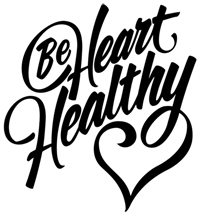Your Monthly Check-Up: September is National Cholesterol Education Month

Cholesterol. A funny word with a bad reputation. A waxy, fat-like substance that floats around in your blood. Sounds icky, but it’s something your body actually needs. The problem is, too much of it can cause serious problems. According to the Centers for Disease Control and Prevention (CDC):
There are two kinds of cholesterol: high-density lipoprotein (HDL) and low-density lipoprotein (LDL). HDL is also called "good" cholesterol. LDL is called "bad" cholesterol. When we talk about high cholesterol, we are talking about "bad" LDL cholesterol.
Seventy-one million American adults have high cholesterol, but only one-third of them have the condition under control…Too much cholesterol in the blood is one of the main risk factors for heart disease and stroke—two leading causes of death in the United States. One way to prevent these diseases is to detect high cholesterol and treat it when it is found.
High cholesterol has no symptoms so you won’t know if you have it until you get a screening. A simple blood test will tell you what your good and bad cholesterol levels are and doctors recommend people ages 20 and over get their cholesterol screened every five years.
Sometimes, if certain risk factors are at play, your doctor may recommend more frequent cholesterol screenings. For example, if your total cholesterol is 200 mg/dL or higher, you’re a man older than 45 or a woman over 50, your HDL is lower than 40 mg/dL or you have other risk factors for heart disease or stroke, your doctor might want to check your cholesterol more often.
The good news is that if you have high bad cholesterol or low good cholesterol, there are things you can do to get yourself more in balance. Making a few lifestyle changes will help lower your LDL. These include:
- Eating more fiber and avoiding saturated and trans fats
- Engaging in moderate exercise for 2.5 hours weekly
- Losing weight
- Quitting smoking
Coincidentally, making these changes to help lower your LDL can also help raise your HDL. It’s like a two-for-one with regard to your health! According to the Mayo Clinic, incorporating healthy mono- and polyunsaturated fats – the fats found in olive, peanut and canola oil – can also help raise your HDL, as well as drinking alcohol in moderation – up to one drink per day for women or two for men. However, if you don’t drink, it’s not a good idea to start just for the purpose of raising your HDL. Go for the many other options instead! Additionally, if you are on cholesterol-controlling medication, take as directed according to your doctor.
See? Cholesterol isn’t all bad – and you’re required to eat fats to keep it in check! Why not celebrate your health this month by adopting a few of these healthy habits and treating yourself to a cholesterol screening? Your heart will thank you, and you’ll no doubt start to see other positive changes, as well!
